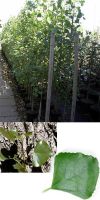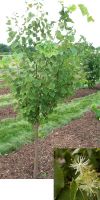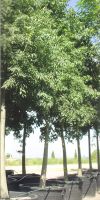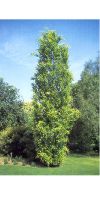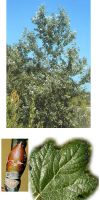Products description
Incense cedar is an evergreen tree with a skinny, columnar shape in youth, becoming only a little more rounded at maturity. In its native habitat it can get as large as 45.7 m tall with a trunk diameter of 1.8 m. In these very large trees, the long straight trunk is swollen and buttressed at the base and usually free of branches for half its length. Most trees in cultivation are pencil-shaped, 9-15 m tall and 2.5-3 m wide. The bark is light reddish brown and scaly; in large trees it is fibrous with deep furrows. The branches are flattened, and they branch into flat vertical fanlike sprays of pleasantly aromatic foliage. The mature leaves are like flat overlapping scales, a quarter-inch long, and closely pressed against the branchlets. Juvenile leaves on new leader shoots are more elongate, to 1.3 cm long. Male and female cones are small and inconspicuous, and borne on different branches of the same tree. 'Intricata' is a selection with twisted, contorted branches and a smaller final size. 'Aureavariegata' has foliage with yellow blotches. 'Compacta' grows in a dense round bush to 1.8 m tall and just as wide. 'Riet' is even smaller, a globose dwarf that stays under 0.9 m tall and wide.
Incense cedar does best on well-drained, slightly acidic sandy loams in cool, mountainous areas. Outside its natural range it tends to stay smaller and bushier. Even under ideal conditions, incense cedar is a slow growing tree. But, it can live 1000 years or more. Light: Full sun or part shade.
Moisture: Incense cedar needs lots of moisture to realize its full potential as a large tree. If it gets less water than ideal it will survive, but remain as a smaller, bushy, but still attractive specimen.
Hardiness: Zones 6 - 8. Incense cedar does quite well in zones 7 and 8, but usually doesn't get as large as it does up north.
Propagation: Incense cedar is difficult, but not impossible, to propagate from cuttings.
They usually are propagated by seed which requires a period of cold stratification. Named cultivars are often grafted onto seedlings of this species or on seedlings of the closely related American arborvitae.
Height: from 175 cm - 200 cm
balled



